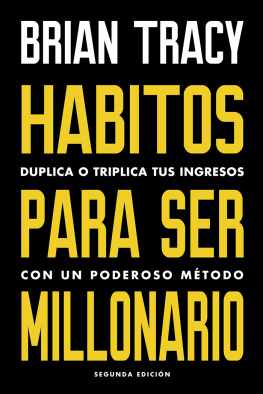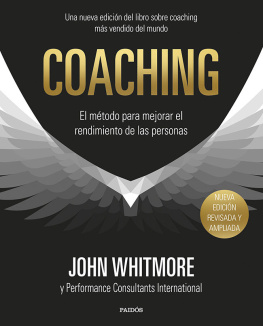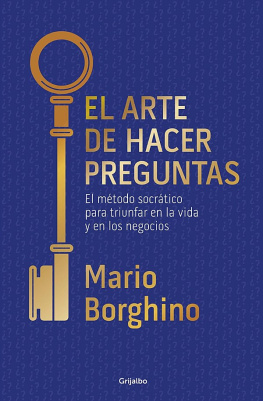Referencias
Las siguientes referencias fueron muy útiles en nuestra revisión de bibliografía para este proyecto. Aunque no citamos todos los recursos en las notas finales de este libro, cada una de ellas nos sirvió para esta obra y nuestros artículos de investigación complementarios en HighPerformanceInstitute.com. Anticipándonos al hecho de que una nueva generación de estudiantes interesados en este campo emergente buscará puertas de entrada adicionales para aprender, hemos incluido todo lo que consideramos relevante. El autor quiere dar las gracias a todos los investigadores y practicantes, tanto de aquí como de cualquier otra parte, que nos brindaron su experiencia y opiniones para este libro y para el resto de materiales que inspiran al mundo del alto rendimiento. Si quieres conocer más recursos, consulta www.HighPerformanceIns titute.com.
Accenture (2009). Untapped potential: Stretching toward the future. International women’s day 2009 global research results. Recuperado de https://www.in.gov/icw/ files/Accenture_Research.pdf.
Aggerholm, K. (2015). Talent development, existential philosophy and sport: On becoming an elite athlete. Nueva York, NY: Routledge.
Amen, D. G. (2015). Change your brain, change your life: The breakthrough program for conquering anxiety, depression, obsessiveness, lack of focus, anger, and memory problems. Nueva York, NY: Harmony.
American Psychological Association (2015). Stress in America: Paying with our health. Recuperado de http://www.apa.org/news/press/releases/stress/2014/stress-report.pdf.
American Psychological Association (2016). 2016 Work and well-being survey. Recuperado de http://www.apaexcellence.org/assets/general/2016-work-and-wellbeing-survey-results.pdf.
Anderson, E., y G. Shivakumar (2015). “Effects of exercise and physical activity on anxiety. Progress in physical activity and exercise and affective and anxiety disorders: translational studies, perspectives and future directions”, Frontiers in Psychiatry, 4, 27. Recuperado de http://journal.frontiersin.org/article/10.3389/fpsyt.2013.00027/full.
Aronson, J. (1992). “Women’s sense of responsibility for the care of old people: ‘But who else is going to do it?’ ”, Gender y Society, 6(1), 8-29.
Artz, B., A. H. Goodall y A. J. Oswald (2016). “Do women ask?”, IZA Discussion Papers, núm. 10183. Recuperado de https://www.econstor.eu/bitstream/10419/147869/1/dp10183.pdf.
Bandura, A. (1980). “Gauging the relationship between self-efficacy judgment and action”, Cognitive Therapy and Research, 4, 263-268.
—— (1982). “Self-efficacy mechanism in human agency”, American Psychologist,37(2), 122.
—— (1991). “Social cognitive theory of self-regulation”, Organizational Behavior and Human Decision Processes, 50(2), 248-287.
Bandura, A., y D. Cervone (1983). “Self-evaluative and self-efficacy mechanisms governing the motivational effects of goal systems”, Journal of Personality and Social Psychology, 45(5), 1017.
Barnwell, B. (27 de agosto de 2014). “The it factor”, Grantland. Recuperado de http:// grantland.com/features/it-factor-nfl-quarterback-intangibles.
Barrett, L. F. (2017). “The theory of constructed emotion: an active inference account of interoception and categorization”, Social Cognitive and Affective Neuroscience,12(1), 1-23.
—— (2017). How emotions are made: The secret life of the brain. Nueva York, NY: Houghton Mifflin Harcourt.
Barrick, M. R., y M. K. Mount (1991). “The big five personality dimensions and job performance: a meta-analysis”, Personnel Psychology, (1), 1-26.
Batty, G. D., I. J. Deary y L. S. Gottfredson (2007). “Premorbid (early life) IQ and later mortality risk: Systematic review”, Annals of Epidemiology, 17(4), 278-288.
Baumeister, R. F. (1984). “Choking under pressure: Self-conscious and paradoxical effects of incentives on skillful performance”, Journal of Personality and Social Psychology, 46(3), 610-620.
Bayer, A. E., y J. Folger (1966). “Some correlates of a citation measure of productivity in science”, Sociology of Education, 39, 381-390.
Beck, J. S. (2011). Cognitive behavior therapy: Basics and beyond. Nueva York, NY: Guilford Press.
Begley, S., y R. Davidson (2012). The emotional life of your brain: How its unique patterns affect the way you think, feel, and live—and how you can change them. Nueva York, NY: Penguin.
Behrman, J. R. (1993). “The economic rationale for investing in nutrition in developing countries”, World Development, 21(11), 1749-1771.
Beilock, S. L., y T. H. Carr (2001). “On the fragility of skilled performance: What governs choking under pressure?”, Journal of Experimental Psychology: General, 130(4), 701.
Benca, R. M., W. H. Obermeyer, R. A. Thisted y J. C. Gillin (1992). “Sleep and psychiatric disorders: A meta-analysis”, Archives of General Psychiatry, 49(8), 651-668.
Berman, M. G., J. Jonides y S. Kaplan (2008). “The cognitive benefits of interacting with nature”, Psychological Science , 19 (12), 1207-1212.
Blackwell, L., C. Dweck y K. Trzesniewski (2007). “Achievement across the adolescent transition: A longitudinal study and an intervention”, Child Development, 78(1), 246-263.
Blazer, D. G., y L. M. Hernandez (eds.) (2006). Genes, behavior, and the social environment: Moving beyond the nature/nurture debate. Washington, D. C.: National Academies Press.
Bloom, B. S. (1985). “The nature of the study and why it was done”, en B. S. Bloom (ed.), Developing talent in young people (pp. 3-18). Nueva York, NY: Ballantine.
Bolman, L. G., y T. E. Deal (2003). Reframing organizations: Artistry, choice, and leadership. Hoboken, NJ: John Wiley & Sons.
Boggs, M., y J. Miller (2008). Project everlasting. Nueva York, NY: Fireside.
Bonebright, C. A., D. L. Clay y R. D. Ankermann (2000). “The relationship of workaholism with work-life conflict, life satisfaction, and purpose in life”, Journal of Counseling Psychology, 47(4), 469-477.
Borjas, G. J. (1990). Friends or strangers: The impact of immigrants on the US economy. Nueva York, NY: Basic Books.
Bossidy, L., R. Charan y C. Burck (2011). Execution: The discipline of getting things done. Nueva York, NY: Random House.
Botelho, E. L., K. R. Powell, S. Kinkaid y D. Wang (2017). “What sets successful CEOs apart”, Harvard Business Review, mayo-junio, 70-77.
Brandt, R. B. (1964). “The concepts of obligation and duty”, Mind, 73(291), 374-393.
Bronson, P., y A. Merryman (2013). Top dog: The science of winning and losing. Nueva York, NY: Random House.
Brown, K. W., y R. M. Ryan (2003). “The benefits of being present: Mindfulness and its role in psychological well-being”, Journal of Personality and Social Psychology, 84(4), 822.
Bryan, T., y J. Bryan (1991). “Positive mood and math performance”, Journal of Learning Disabilities, 24, 490-494.
Burt, C. (1966). “The genetic determination of differences in intelligence: A study of monozygotic twins reared together and apart”, British Journal of Psychology, 57(12), 137-153.
Butler, A. C., J. E. Chapman, E. M. Forman y A. T. Beck (2006). “The empirical status of cognitive-behavioral therapy: A review of meta-analyses”, Clinical Psychology Review, 26(1), 17-31.
Cacioppo, J. T., J. H. Fowler y N. A. Christakis (2009). “Alone in the crowd: The structure and spread of loneliness in a large social network”, Journal of Personality and Social Psychology, 97, 977-991.
Cain, S. (2013).











